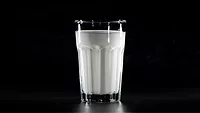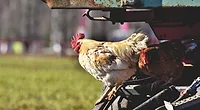Aussie Researchers Find MLVA Helps Trace Foodborne Pathogens to Source
Source: Homeland Security Newswire
Research from the University of Melbourne, Australia, could make it easier for public health investigators to determine if a case of food poisoning is an isolated incident or part of a larger outbreak. The findings are published ahead of print in the Journal of Bacteriology.
The study focuses on a test called multi-locus variable number tandem repeats variable analysis (MLVA). The test, which is increasingly used in the detection and investigation of foodborne illness outbreaks, analyzes specific sequences of DNA (called loci) that change rapidly enough over time to distinguish outbreak strains from other circulating strains of the bacteria but not so rapidly that connections could be masked by changes arising during the course of an outbreak.
A news release from the American Society for Microbiology reports, however, that the rates at which MLVA profiles change have not been directly investigated for Salmonella, and thus it is sometimes unclear how these profiles should be interpreted in the context of outbreak detection and investigation.
In the study, the investigators grew an isolate of Salmonella Typhimurium from an Australian food poisoning outbreak, and observed changes in its MLVA profile during more than 28,000 generations of growth in the laboratory. Then, using the same bacterial lineage, they observed changes in MLVA profile during 500 days of growth in mice.
They estimated the rates of copy number change at each of the five loci that are commonly used for S. Typhimurium MLVA. Three of the loci saw changes in the DNA, but two did not. Based on these results, the researchers are recommending that isolates with zero or one variation in the three rapidly changing loci but no differences in the other two should be considered part of the same cluster.
They also noted that the relative rates of change among the loci were the same in the Petri dish studies and in the mouse study.
Looking for quick answers on food safety topics?
Try Ask FSM, our new smart AI search tool.
Ask FSM →
“This tells us we don’t need to worry about where the bacteria were isolated from — humans or food,” said Kathryn Holt, an author of the study.
MLVA is used for investigations of foodborne illnesses besides Salmonella, including Listeria and E. coli. It is the primary method for investigations of Salmonella outbreaks in Europe, the UK, Australia, and elsewhere, said Holt.
“In the U.S., the Centers for Disease Control and Prevention uses another technique, called PFGE, for initial investigations and follows that with MLVA,” she said.
— Read more in Karolina Dimovski et al., “Analysis of Salmonella Typhimurium variable number tandem repeat (VNTR) data for public health investigation based on measured mutation rates and whole-genome sequence comparison,” Journal of Bacteriology (published ahead of print 23 June 2014) (doi: 10.1128/JB.01820-14)







